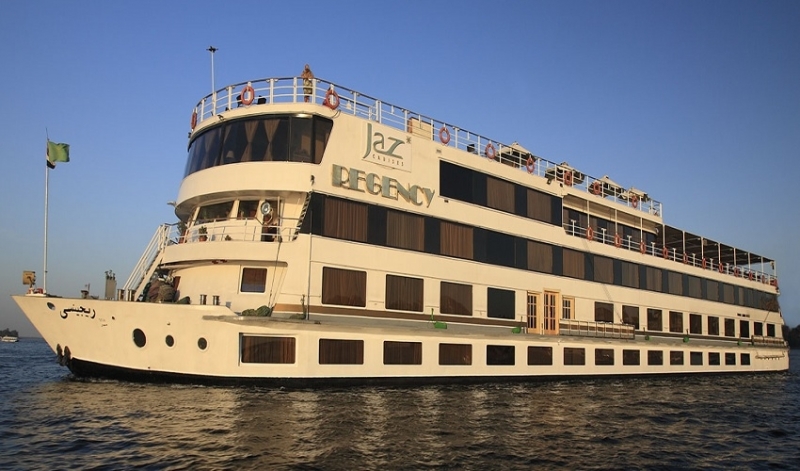
Best Nile cruise Egypt
Prepare yourself to explore all what Egypt has to offer with Plan Egypt Tours as we offer one of the best programs to explore all the landmarks in Egypt, starting from Cairo at the north, arriving to Abu Simbel at the south. Get the chance to go back in time to the days of the Ancient Egypt with our Nile Cruise Holidays and get the best tours in Cairo, then enjoy unforgettable sailing via the great Nile River to explore the magnificent monuments between Luxor and Aswan. Eventually, you will live a charming adventure while visiting Abu Simbel Temple.
Discover Aswan and all of its wonderful attractions, as well as the surrounding natural beauty, and feast your eyes on the splendour of the Philae Temple, which houses numerous ancient Egyptian sanctuaries and shrines, including For Millennia, the Bed of the Pharaoh, Trajan's Kiosk, and more. Additionally, the High Dam and the Unfinished Obelisk, which was constructed by Queen Hatsheput and revealed its magnificent design as it was intended to be the largest Obelisk in the world, will be on your itinerary.
Explore the most well-known temple in the world, Abu Simbel Temple, with the Best Nile cruise Egypt! Visit the impressive landmark, which consists of the Temple of Ramses II and the Temple of Queen Nefertari, both of which were carved out of rock during the time of King Ramses II (1290–1223 BC). They both capture the splendour and opulence of the Ancient Kingdom of Egypt. Amon Ra, Harmakis, and Ptah, three gods of ancient Egypt, were honoured at the Abu Simbel Temple. Four statues that belonged to the Pharaoh make up the facade.
The wonders of Egypt while cruising and the incomparable experiences
The ruins of Rhakotis, the illustrious ancient town from whence Alexandria sprang, are loomed over by a 30-meter-tall column. A prominent landmark of the city for centuries, Pompey's Pillar is a single, tapered shaft that measures 2.7 metres at its base and is topped by a beautiful Corinthian capital. It was carved from red Aswan granite. The column emerges from the scant Temple of Serapeum remains, a majestic building that formerly existed here in antiquity.
Travelers who were reminded of the assassination of the Roman general Pompey by Cleopatra's brother gave the column its name, however an inscription on the base of the structure—which was probably formerly covered in debris—states that it was built in AD 291 to support a statue of the emperor Diocletian.
This Ptolemaic temple, which was constructed in Egypt between 237 and 57 BC, is one of the oldest structures still standing. The temple is devoted to Horus, the vengeful son of Isis and Osiris, and is preserved by desert sand that filled the area when the pagan ritual was outlawed. It is also one of the most evocative old structures because its roof is still in tact.
Edfu was a settlement and cemetery site from around 3000 BC onward. It was the 'home' and cult centre of the falcon god Horus of Behdet (the ancient name for Edfu), although the Temple of Horus as it exists today is Ptolemaic. Started by Ptolemy III (246–221 BC) on 23 August 237 BC, on the site of an earlier and smaller New Kingdom structure, the sandstone temple was completed some 180 years later by Ptolemy XII Neos Dionysos, Cleopatra VII’s father. In conception and design it follows the general plan, scale, ornamentation and traditions of Pharaonic architecture, right down to the Egyptian attire worn by Greek pharaohs depicted in the temple’s reliefs. Although it is much newer than cult temples at Luxor or Abydos, its excellent state of preservation helps to fill in many historical gaps; it is, in effect, a 2000-year-old example of an architectural style that was already archaic during Ptolemaic times.
This majestic main temple of the Abu Simbel complex was hewn out of the mountain on the west bank of the Nile between 1274 and 1244 BC. It was equally dedicated to the deified Ramses II himself as it was to Ra-Horakhty, Amun, and Ptah. Undoubtedly constructed as a warning of the pharaoh's power, the four enormous sculptures of the pharaoh that stand in front of the temple are like enormous sentinels guarding the approaching commerce from the south.
Over the centuries both the Nile and the desert sands shifted, and this temple was lost to the world until 1813, when it was rediscovered by chance by the Swiss explorer Jean-Louis Burckhardt. Only one of the heads was completely showing above the sand, the next head was broken off and, of the remaining two, only the crowns could be seen. Enough sand was cleared away in 1817 by Giovanni Belzoni for the temple to be entered.
Sonesta St. George Nile Cruise
Movenpick Royal Lily Nile Cruise
Mobile : +2010014222529
+201033358596
E-mail : amir@egyptonlinetours.com
Web site: www.planegypttours.com


